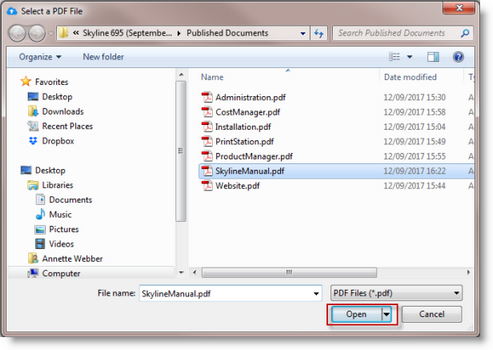

- Uploading pdf maps to macenc update#
- Uploading pdf maps to macenc series#
- Uploading pdf maps to macenc download#
- Uploading pdf maps to macenc free#
Still, the ability to select which layers you want to appear on the map provides flexibility in map appearance that is not possible with the traditional 7.5-minute topo quads.Īs you can see, modifying the map by changing layer visibility is pretty simple. The organization of features into layers on US Topos isn’t perfect for example you can’t turn off hydrographic feature names without also turning off the hydrographic features themselves. Some of these layers are on the map frame itself (like “Woodland”) and others contain content for the map margins or “collar.” Note that since layers are grouped hierarchically, it is possible to make an entire group of layers visible or invisible by clicking on the group name (such as “Terrain”). Figure 4 shows an example where some of the layers (marked with a red X) have been turned off and are no longer visible. 3 – Default visible layers for the Miscauno Island map.Ĭustomizing the map by making different layers visible or invisible is simple, by just clicking on the little eyeball icons next to each layer.

Fig.2 – Expanding the layer list.įigure 3 shows the layers visible by default for this US Topo. You can expand the layer list by choosing Expand All from the Layers dropdown menu, as shown in Figure 2. Fig.1 – Portion of Miscauno Island US Topo showing layer control. Figure 1 shows a portion of the 2018 Miscauno Island, Wisconsin, US Topo, as it appears in a PDF reader (in this case, Adobe Acrobat Pro). US Topos use layers to organize different types of map content into categories. One way that US Topos can be customized is by changing the visibility of different layers. Not only are US Topos more up-to-date, but they offer customization options that the earlier topo map editions do not.
Uploading pdf maps to macenc download#
The familiar 7.5-minute USGS topo quads are also available on topoView, but unless you need these maps for historical analysis, you should download and use the more current US Topos instead. The topoView app also contains USGS topographic maps from the Historical Topographic Map Collection, which often go back as far as the 1890s in some areas.
Uploading pdf maps to macenc free#
They also distinguish between the current generation of geospatial PDFs produced in an open source format, and their earlier proprietary GeoPDF format maps. The best place to go for US Topos is probably topoView, a free online app from the USGS that allows users to view, inspect and download US Topos from the desktop. The USGS provides a concise description of the file format here.
Uploading pdf maps to macenc series#
For Wisconsin, four series of US Topos have been published since the program began in 2009.
Uploading pdf maps to macenc update#
US Topos are modeled on the familiar 1:24,000-scale 7.5-minute USGS “topo quads” that many readers will be familiar with, but are produced on a much more frequent update cycle. The agency uses the name “US Topo” to refer specifically to topographic maps published in 2009 and later that are mass-produced using national GIS databases. The US Geological Survey (or USGS) has been delivering topographic maps to the public in geospatial PDF format for over a decade. For a deeper explanation of geospatial PDFs you can refer to this SCO publication last updated in 2019. Geospatial PDFs are also sometimes referred to as GeoPDFs, although there some differences that I will not get into here. Geospatial PDFs are especially useful for navigation in areas where WiFi and cell phone service is unavailable, since they can be transferred to a mobile device and used with a GPS-enabled app. These files are readable in Adobe Acrobat software, as well as other PDF readers, and can be imported into some GIS packages (such as QGIS) to serve as ready-made base maps.

Geospatial PDFs are traditional PDF (portable document format) files with added georeferencing information, which makes it possible to use these files in cartography and GIS. Wisconsin Mapping Bulletin PDF Archives (1975 – 2003).Searchable Online News Archives (2003 – Present).WSRS2022: The Wisconsin Spatial Reference System 2022 Task Force.


 0 kommentar(er)
0 kommentar(er)
